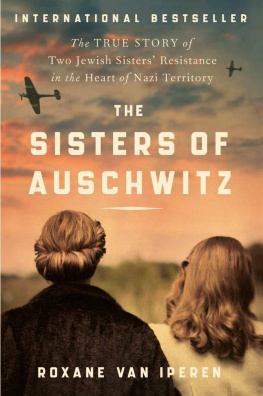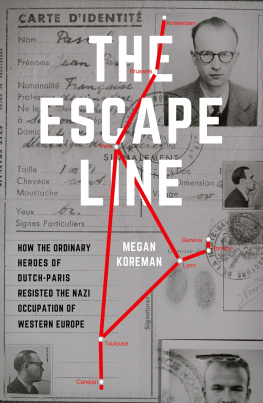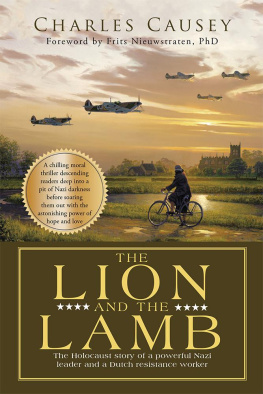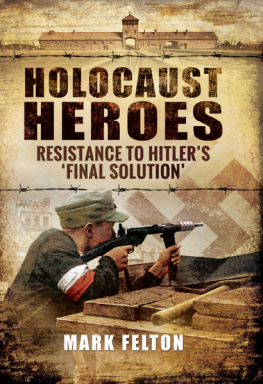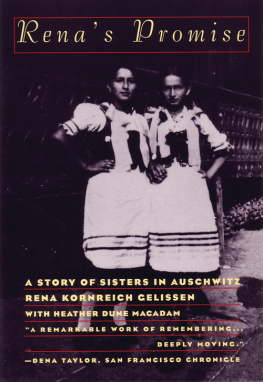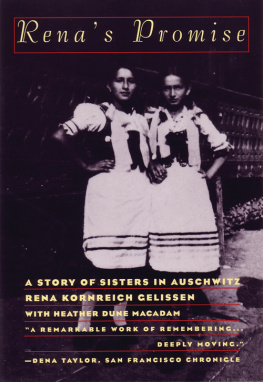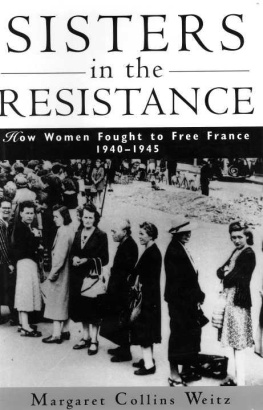Roxane van Iperen - The Sisters of Auschwitz: The True Story of Two Jewish Sisters Resistance in the Heart of Nazi Territory
Here you can read online Roxane van Iperen - The Sisters of Auschwitz: The True Story of Two Jewish Sisters Resistance in the Heart of Nazi Territory full text of the book (entire story) in english for free. Download pdf and epub, get meaning, cover and reviews about this ebook. year: 2021, publisher: Harper Paperbacks, genre: Detective and thriller. Description of the work, (preface) as well as reviews are available. Best literature library LitArk.com created for fans of good reading and offers a wide selection of genres:
Romance novel
Science fiction
Adventure
Detective
Science
History
Home and family
Prose
Art
Politics
Computer
Non-fiction
Religion
Business
Children
Humor
Choose a favorite category and find really read worthwhile books. Enjoy immersion in the world of imagination, feel the emotions of the characters or learn something new for yourself, make an fascinating discovery.
- Book:The Sisters of Auschwitz: The True Story of Two Jewish Sisters Resistance in the Heart of Nazi Territory
- Author:
- Publisher:Harper Paperbacks
- Genre:
- Year:2021
- Rating:4 / 5
- Favourites:Add to favourites
- Your mark:
The Sisters of Auschwitz: The True Story of Two Jewish Sisters Resistance in the Heart of Nazi Territory: summary, description and annotation
We offer to read an annotation, description, summary or preface (depends on what the author of the book "The Sisters of Auschwitz: The True Story of Two Jewish Sisters Resistance in the Heart of Nazi Territory" wrote himself). If you haven't found the necessary information about the book — write in the comments, we will try to find it.
A New York Times bestseller
The unforgettable story of two unsung heroes of World War II: sisters Janny and Lien Brilleslijper who joined the Dutch Resistance, helped save dozen of lives, were captured by the Nazis, and ultimately survived the Holocaust.
Eight months after Germanys invasion of Poland, the Nazis roll into The Netherlands, expanding their reign of brutality to the Dutch. But by the Winter of 1943, resistance is growing. Among those fighting their brutal Nazi occupiers are two Jewish sisters, Janny and Lien Brilleslijper from Amsterdam. Risking arrest and death, the sisters help save others, sheltering them in a clandestine safehouse in the woods, they called The High Nest.
This secret refuge would become one of the most important Jewish safehouses in the country, serving as a hiding place and underground center for resistance partisans as well as artists condemned by Hitler. From The High Nest, an underground web of artists arises, giving hope and light to those living in terror in Holland as they begin to restore the dazzling pre-war life of Amsterdam and The Hague.
When the house and its occupants are eventually betrayed, the most terrifying time of the sisters lives begins. As Allied troops close in, the Brilleslijper family are rushed onto the last train to Auschwitz, along with Anne Frank and her family. The journey will bring Janny and Lien close to Anne and her older sister Margot. The days ahead will test the sisters beyond human imagination as they are stripped of everything but their courage, their resilience, and their love for each other.
Based on meticulous research and unprecedented access to the Brilleslijpers personal archives of memoirs and photos, Sisters of Auschwitz is a long-overdue homage to two young womens heroism and moral bravery--and a reminder of the power each of us has to change the world.
Roxane van Iperen: author's other books
Who wrote The Sisters of Auschwitz: The True Story of Two Jewish Sisters Resistance in the Heart of Nazi Territory? Find out the surname, the name of the author of the book and a list of all author's works by series.

